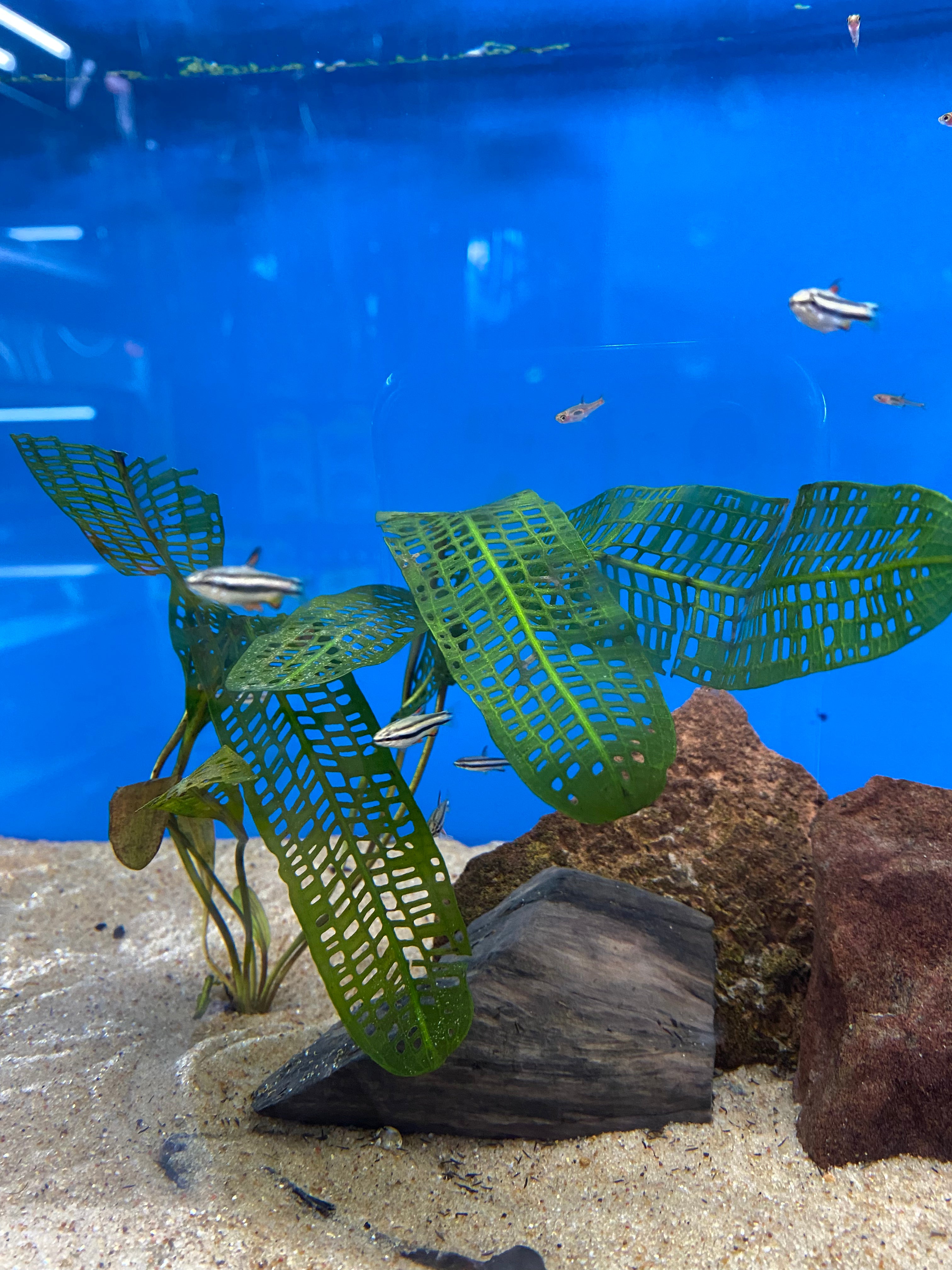Photo Disclaimer
Description
BULB PLANTS MAY NATURALLY DIFFER FROM PHOTOS
The Madagascar Lace Plant is famous among aquatrists for its large, fenestrated leaves. The see-through, hole-filled foliage looks almost plastic, and can exceed 2-3' in length. It has a reputation as being difficult, but as long as its basic needs are met it grows very rapidly. Lace plants prefer high light and lots of nutrients, and seem to prefer flowing water to still water. They also have a winter dormancy like most other Aponogeton; the leaves should be removed, and the bulb stored in wet sphagnum at cool temperatures for a few months. Once returned to water, they sprout new leaves amazingly fast. Some aquarists report that their lace plant has lived for many years without dormancy, but if it "dies" suddenly and drops all its leaves, especially after flowering, you should proceed with dormancy.

